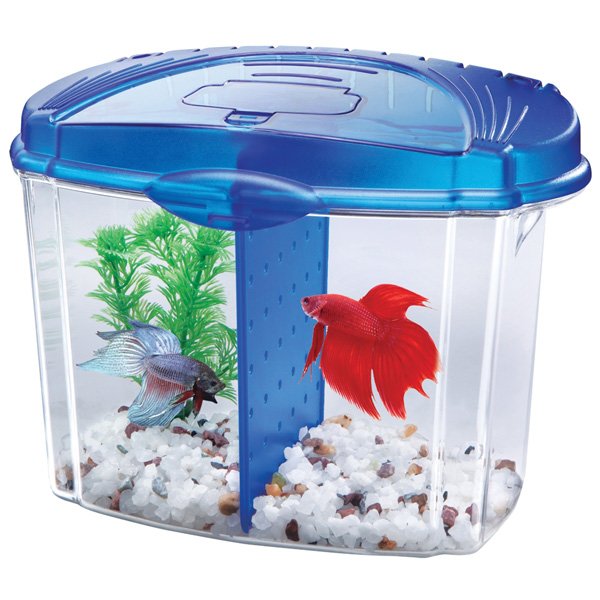Choosing an Aquarium or Fish Tank
 Glass aquariums tend to be less
expensive than acrylic tanks, but acrylic tanks do not scratch as easily as
glass. Also, glass bowls and aquariums require support only along the edges, which is
different than Plexiglas tanks that require a special stand that provides
support along the entire bottom of the tank.
Glass aquariums tend to be less
expensive than acrylic tanks, but acrylic tanks do not scratch as easily as
glass. Also, glass bowls and aquariums require support only along the edges, which is
different than Plexiglas tanks that require a special stand that provides
support along the entire bottom of the tank.
Drawbacks
The drawback of having a glass tank is that it's more fragile, it's heavier, and it has a higher rate of refraction, which means that when the tank is viewed at an angle, the contents look more distorted than with an acrylic tank. Why is this important? Well, many people get fish tanks to look at the fish, they seek enjoyment and calmness out of the whole environment. Distorted images take away from the natural beauty of the tank.
Plexiglas is used mostly in large tanks, helps reduce the weight of the tank. Plexiglas also keeps it shape when you have very large and aggressive fish, who sometimes can ram the side of the tank until it shatters. And, as mentioned above, acrylic tanks helps keep the view pristine and pure.
Pros & Cons of Acrylic Tanks Versus Glass Fish Tanks
Here's a run-down of the pros and cons of when it comes to Glass versus Acrylic:
|
Glass |
Plexiglas |
|---|---|
|
Cheaper per gallon |
More expensive per gallon |
|
Hard to scratch |
Scratches easily |
|
Scratches are permanent |
Scratches can be buffed out |
|
Higher index of refraction |
Lower index of refraction |
|
Heavy, even when empty |
Lighter, when compared to same size in glass |
|
Support edges needed |
Special stand needed to support entire base |
|
Easier to break |
Harder to break |
As with any major purchase, the choice of what kind of aquarium to get depends one only one thing: you. Whatever you feel most comfortable with and will be able handle will be the best purchase for you and your fish. Talk to other fish owners, ask around and get the scoop on what other fish-lovers use before sinking money into your first tank.
Copyright 1999-2025 GregRobert Enterprises, LLC.
Family Owned / Family Values

